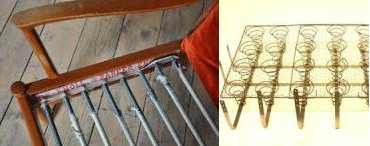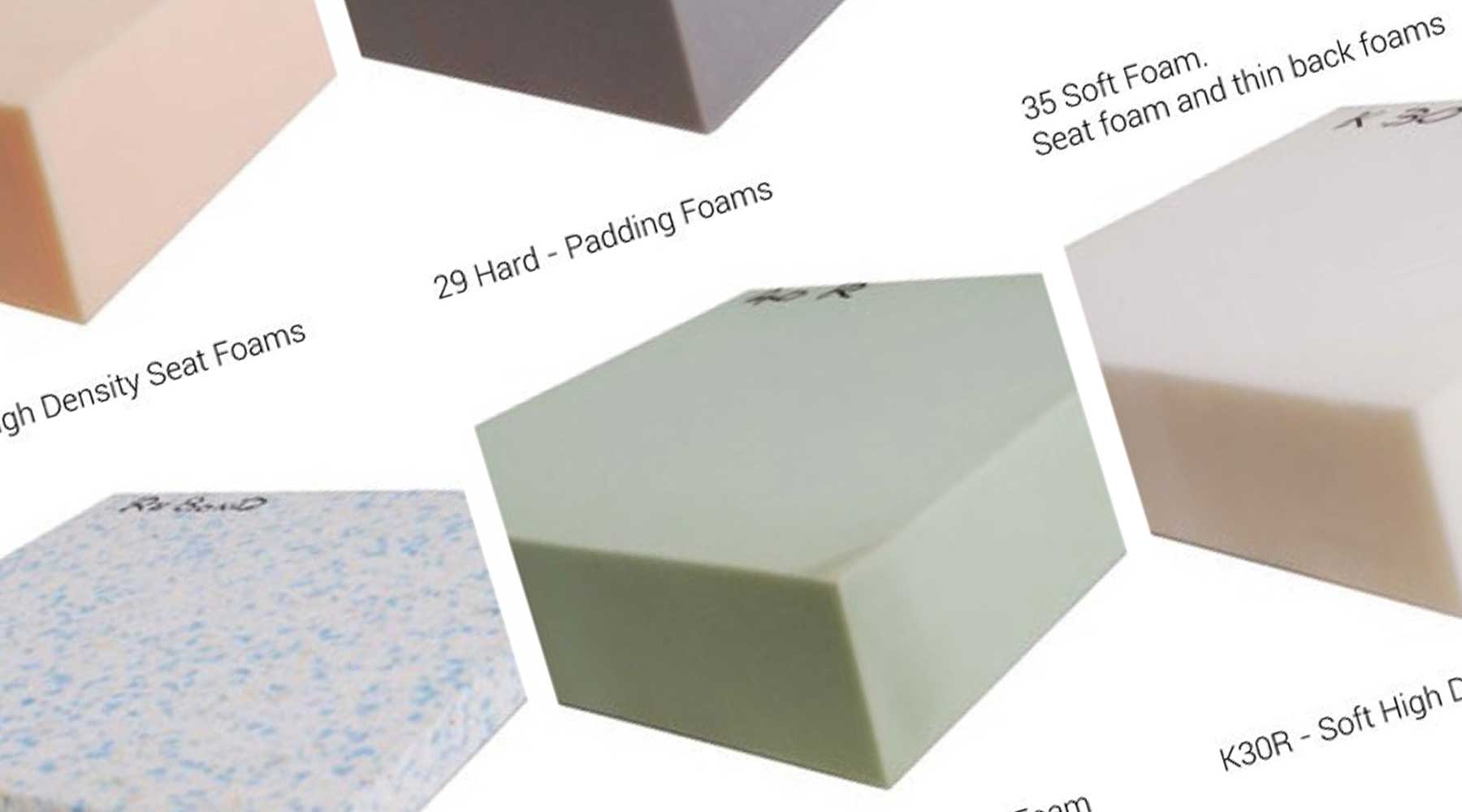We continue our series of blogposts covering the history of upholstery, with the final blogpost of the series, number 8, below, covering the development of foam for usage in upholstered furniture, the development of ‘zigzag’ and tension springs, as well as a brief outline of the modern furniture industry.
Polyurethane was first made in Germany as early as 1937. However, commercial production of flexible foam in Europe started in 1954. NASA (North American Space Agency) pioneered the development of ‘memory foam’ in 1966, and it has recently become more popular for use in upholstered furniture. In just a few years, polyurethane foam became the material of choice for furniture upholstery and car seats, for the most part replacing more traditional stuffings like animal hair, as it was cheaper and quicker to work with.
Foam is versatile, lightweight, and durable. The different families of foam that have been developed over time allow allow furniture makers and upholsterers a virtually endless range of foam types each with specific properties and preferred uses. Foams are available in different thicknesses, densities and the choice of which foam to use should be carefully considered in upholstery applications. The following page shows just a small selection of the foams on offer for use in upholstered furniture.


Zigzag springs (sometimes referred to as serpentine or ‘S’ springs because of their shape) are the most commonly used type of springs in contemporary/modern upholstered furniture, not only because they are relatively cheap, but because of their ‘anti-sag’ qualities . These steel wire springs snake in a continuous S-pattern from the front to the back of the frame and are typically tied together (like coil springs), although there is less tying involved than when using coils. 8 or 9-gauge serpentine springs should be used for seating, whilst the softer 11-gauge are more suitable for the back supports of sofas and armchairs. While most serpentine springs are made of steel wire, some high-quality furniture manufacturers use copper-coated springs to prevent corrosion. Serpentine springs require much less space in the frame of a sofa or armchair, making them a popular choice for modern furniture makers with sleek designs.
Other advancements in spring technology used in upholstered furniture during the 20th century were that of the ‘tension spring’, which appeared in 1950s and 1960s armchairs, in particular those produced by Parker Knoll (see below left). Spring units (see below right) also appeared in mass-produced furniture, which helped reduce labour time, and thus cost, as you didn’t need to know how to position and tie springs in place, instead you just place the spring unit into the frame.


The Contemporary / Modern period in upholstered furniture (examples above) is from the 1970s onwards. During the last 50 years, the world of upholstery has changed immeasurably, as modern synthetic materials are often used and preferred to traditional ones, as every aspect of the modern furniture trade is geared towards keeping costs low and ever-changing fashions and tastes that require the manufacturers to be nimble when producing products for a new year/season.
Modern furniture frames are often made from real timber substitutes such as MDF and chipboard, and the seat backs and cushions are almost exclusively made of or lined with some sort of foam. There is no particular contemporary design attributes that have stuck over the course of the last 50 years, other than the fact that designs and fashions change quickly, and thus so does the appearance of the furniture available to consumers. Although a lot of the contemporary upholstered furniture available isn’t necessarily made to last like a lot of the more durable furniture available before this period, it is driven by consumer behaviour and their wants/desires, with an almost infinite amount of choices available to people in the 21st century as a result.
This concludes our series of blogposts covering the history of upholstered furniture, I hope you found this series both informative and interesting.


